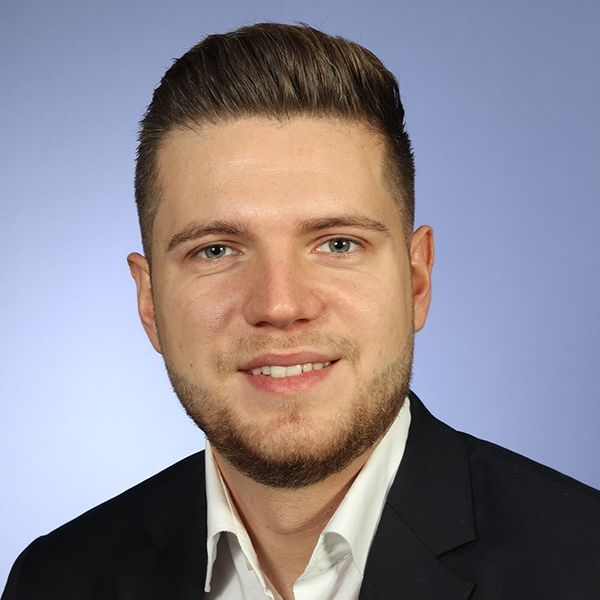| University | Leiden University (LU) |
| Institute and/or group | Leiden Institute of Chemistry (LIC) |
| Advisors | Prof. dr. Alexander Kros (LU), Prof. dr. Roxanne Kieltyka (LU) |
| oLife Research Areas | II. Defining properties and synthesis of Life, from the molecular to the biosphere level IV. Distribution of Life across the universe |
| Start date
End date Next career step |
August 1, 2020
January 31, 2024 Institute of Chemistry/Supramolecular catalysis, University of Amsterdam , the Netherlands |
Profile of the fellow
Dennis Aschmann was born in Düsseldorf (Germany). He studied chemistry in Essen (Germany), where he completed his bachelor’s and master’s degree. For his doctoral thesis he joined the group of Prof. Carsten Schmuck and worked on the development of artificial ligands for the modulation of protein-protein interactions (PPIs). Besides his interest in using chemical compounds to modulate biological systems, he is also interested in the development of soft materials for bio-applications. As a member of the oLife fellowship programme he will work in the lab of Prof. Alexander Kros on the question how simple life uses primitive mechanism for segregation of cell material.
Fusion of cell wall deficient bacteria
The most widespread theory about the origin of life on earth is based on the self-assembly of molecules which formed the first primordial cells. These cells are surrounded by a simple membrane that consists of phospholipids and thus separates the cell interior from the environment. It is assumed that by taking up further genetic material or by cell-cell fusion, genetic innovations were created from these cells, which led to the first bacterial cells that could form a cell wall.
However, bacterial cells can be made to lose their cell wall again by a special process, which means that these cells are no longer able to multiply via the directed FtsZ machinery but use simple proliferation mechanisms. These cells are called cell-wall–deficient bacteria and have been suggested to resemble primordial life forms that existed well before the cell wall evolved. Cell-wall-deficient bacteria cells can take up DNA from the environment or via fusion with other wall-deficient cells, albeit that this process is extremely inefficient.
To overcome this problem a chemical approach is used to bring the cells to cell-cell fusion and follow the subsequent movement of cell material in daughter cells. In this project, we will address the question why no real diploid or multiploid bacteria exists, as well as what happens to chromosomes if two different bacteria strains got fused together.

Dr. Dennis Aschmann
